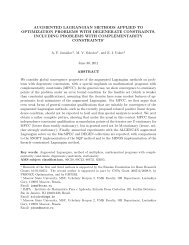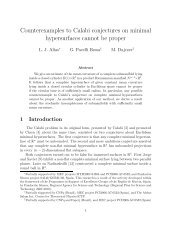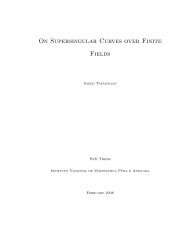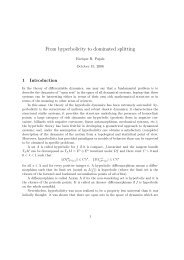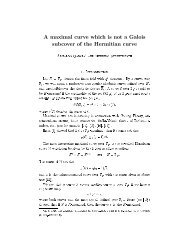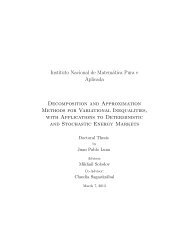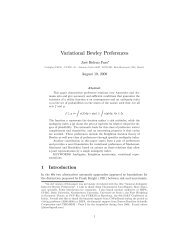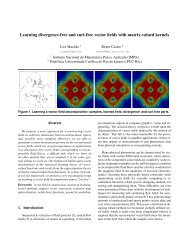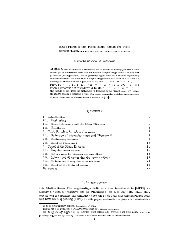a reduced model for internal waves interacting with submarine ...
a reduced model for internal waves interacting with submarine ...
a reduced model for internal waves interacting with submarine ...
You also want an ePaper? Increase the reach of your titles
YUMPU automatically turns print PDFs into web optimized ePapers that Google loves.
The AM4 scheme used is:<br />
η n+1<br />
j<br />
V n+1<br />
j<br />
=η n j + ∆t ( 251E<br />
n+1<br />
j + 646E n j<br />
720<br />
− 264En−1 j + 106E n−2<br />
j<br />
= V n j+ ∆t ( 251F<br />
n+1<br />
j + 646F n j<br />
720<br />
− 264Fn−1 j + 106F n−2<br />
j<br />
− 19E n−3 )<br />
j ,<br />
− 19F n−3 )<br />
j .<br />
To initialize both predictor-corrector schemes, the RK4 described above is<br />
employed.<br />
4.3 Flat bottom experiments<br />
Example 4.1. We first consider the LFM <strong>for</strong> the non dispersive caseβ=0,<br />
⎧<br />
⎪⎨ η t = u 1ξ ,<br />
⎪⎩ u 1t =η ξ .<br />
(4.8)<br />
This is just the bidirectional wave equation <strong>for</strong>η<br />
η tt −η ξξ = 0<br />
<strong>with</strong> initial contidions<br />
η(ξ, 0)=η 0 (ξ),<br />
⎧⎪⎨⎪⎩<br />
η t (ξ, 0)=u 10ξ (ξ).<br />
This <strong>model</strong> (whose exact solution is well known) is useful <strong>for</strong> validating and comparing<br />
the numerical schemes, since it is more demanding than the dispersive<br />
<strong>model</strong>s regarding numerical stability, as we commented in the previous Section.<br />
66



